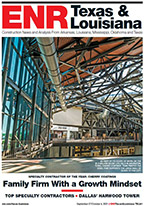The award last month of a $581- million design-build contract to a Fluor-Balfour Beatty team to build a new expressway near Austin is not sitting well with the losing team or with local contractors. Texas firms say they are being squeezed out of competition by mandatory design-build procurement rules on large projects, while the losing bidder on the Bergstrom Expressway, led by Spanish giant Ferrovial Agroman, has challenged its loss in a bid protest.
The Ferrovial Agroman team claims that the Central Texas Regional Mobility Authority graded its technical proposal and project execution plan too low and also contends there was a conflict of interest in the selection because a subcontractor on Fluor's team, Beverly Silas & Associates, is run by a board member of the Austin Capital Metropolitan Transportation Authority; it is listed as a project partner, says a media report. The central Texas agency had a deadline of this week to decide to maintain the contract award or rebid. Media reports indicate the Ferrovial team intends to sue if the award is upheld.
Industry participants point to recent Texas rules that have attracted larger out- of-state bidders because they stipulate use of design-build and construction management-at-risk procurements on projects of $250 million and up. "Bergstrom Expressway is a large project, but it's not that complicated. ... Local contractors have felt like they're being discriminated against because you have to have specific experience with this particular method to be considered," says Tom Johnson, vice president of the Associated General Contractors' Austin chapter.
But alternative-delivery proponents say legislation now moving through the statehouse to restrict the approaches could be costly to the state in project completion delays. "Older delivery methods can waste a lot of money," says Richard Thomas, director of legislative affairs at the Design Build Institute of America. Fluor said it has three highway projects in Texas being executed under design-build contracts.
AGC supports design-build on the biggest, most complex projects, Johnson says. But Thomas counters that smaller projects can also use the approach effectively and allow smaller contractors to gain alternative project experience.


Post a comment to this article
Report Abusive Comment